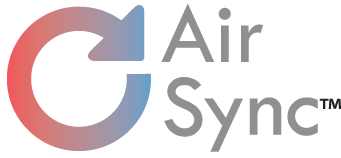AirSync Automatic Post-Flight Analysis and Alerts
The following incident was shared with the AirSync team by OpenAir, one of our aircraft management customers. OpenAir details how AirSync’s Automatic Post-Flight Analysis and Alerting tool helped operations identify a high CHT event with an owner’s aircraft and propose corrective action all while the owner was over a thousand miles away on cross-country trip.
Click Here to download this Case Study as a PDF
When OpenAir committed to using the AirSync system, we knew we were going to catch situations and fix them before expensive problems developed. Sure enough, on Tuesday, a pilot flew an aircraft and allowed the CHT’s to go too high for just 64 seconds, but thanks to AirSync, we not only caught the issue, but we addressed it with the pilot in less than 24hrs.
This situation may have been a fluke, or not, either way, knowing about it so efficiently, allows us to potentially save thousands of dollars in future maintenance costs for the aircraft owner.
I wanted to share with you the dialogue that occurred less than 24 hours from the flight. After AirSync automatically alerted operations to the high CHT event, we reached out to the pilot who was over a thousand miles away to debrief what we had seen. The pilot indicated to us that he thought he was climbing out at the proper speed and asked if we had any suggestions for improvement on his part. Below is a portion of our responding email:
It looks like your initial climb out speed was around 110 KIAS. You can see the CHT’s we’re going up based on the information below, then your airspeed dropped down to somewhere around 87 KIAS – this is ultimately what took the temps into the caution area. You got the caution alert CAS message, then increased your airspeed to stabilize the temps.

About 30 min later, you did a secondary climb from 8,000 to 10,000, where we see your CHT’s rise again, and your airspeed dip below 120 KIAS (albeit slightly below).

So . . . You asked what would I recommend? I recommend that when in a climb, especially when it’s hot out, instead of setting the autopilot in the Vertical Speed (VS) mode, that you use the Flight Level Change (FLC) mode to hold 120 KIAS or faster as needed. It’s OK to climb at less than 500’/min, especially when it risks overheating the engine.
The pilot who flew this, was very appreciative that we were not only helping him become a better pilot, but he liked how we were providing extraordinary stewardship as the aircraft owner (I certainly appreciated that sentiment, and his overall receptiveness to the comments and oversight).
In my opinion (and frankly the reason I’m sending you this email), AirSync more than paid for itself the moment we sent the pilot this information. Hopefully these issues will never occur in other planes, but having AirSync in place means we can address the issue in a timely manner (in this case, less than 24hrs), and hopefully long before damage is done.
I simply had to share yesterday’s experience with you, as we just believe in this product’s value for all involved.
Barry Goldberg
General Manager
OpenAir Charter, Flight Training and Aircraft Management
www.flyopenair.com


